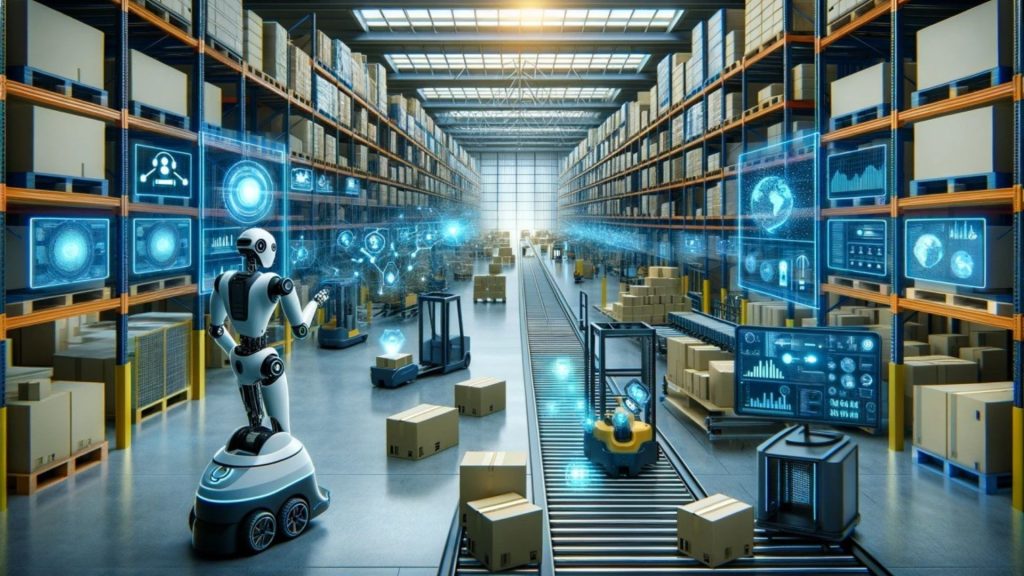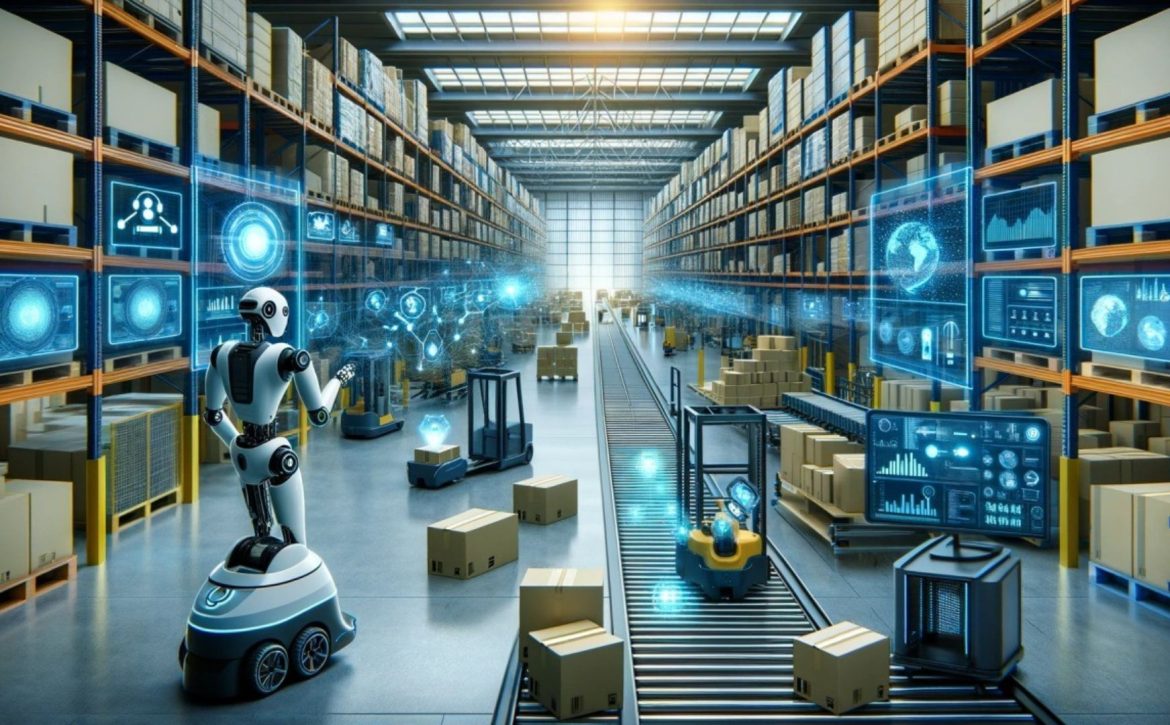How Machine Learning Optimizes Inventory Forecasting
How Machine Learning Optimizes Inventory Forecasting

Introduction
In today’s highly competitive business environment, efficient inventory management is crucial for success. Overstocking ties up capital and increases storage costs, while understocking can lead to lost sales and dissatisfied customers. Traditional inventory forecasting methods often rely on historical data and simple statistical models, which may not capture the complexities of market dynamics. Machine Learning (ML), a subset of Artificial Intelligence (AI), is revolutionizing inventory forecasting by providing more accurate predictions and optimizing stock levels. This article explores how ML optimizes inventory forecasting, the technologies involved, benefits, challenges, and real-world examples of businesses leveraging ML for inventory management.
The Importance of Inventory Forecasting
Inventory forecasting involves predicting future inventory requirements to meet customer demand without overstocking or understocking. Accurate forecasting is essential for:
- Cost Reduction: Minimizing holding costs and reducing waste from unsold products.
- Customer Satisfaction: Ensuring product availability to meet customer demand promptly.
- Efficient Operations: Streamlining supply chain processes and improving cash flow.
However, traditional forecasting methods often fall short due to the complexities of modern markets, seasonal variations, promotional impacts, and rapidly changing consumer behaviors.
Challenges in Traditional Inventory Management
Traditional inventory management faces several challenges:
Limited Data Analysis
Conventional methods often rely on simple statistical models and historical sales data, lacking the ability to analyze complex patterns and multiple data sources.
Inaccurate Demand Forecasts
Static models fail to account for factors like market trends, competitor actions, economic indicators, and external events, leading to inaccurate demand predictions.
Manual Processes
Manual data entry and analysis are time-consuming and prone to errors, hindering timely decision-making.
Lack of Real-Time Insights
Traditional systems may not provide real-time data, preventing businesses from responding quickly to changes in demand.
How Machine Learning Enhances Inventory Forecasting
Machine Learning addresses these challenges by leveraging advanced algorithms and large datasets to improve forecasting accuracy.
Data Collection and Integration
ML models can process and analyze vast amounts of data from various sources:
- Historical Sales Data: Past sales records provide a baseline for demand patterns.
- Market Trends: Data on industry trends, consumer preferences, and competitor actions.
- External Factors: Economic indicators, weather data, and social media sentiments.
- Inventory Levels: Real-time stock information across different locations.
Integrating diverse data sources enables ML models to capture complex relationships influencing demand.
Machine Learning Algorithms Used
Several ML algorithms are employed for inventory forecasting:
Time Series Analysis
- ARIMA Models: Autoregressive Integrated Moving Average models for analyzing time-dependent data.
- Exponential Smoothing: Methods like Holt-Winters for capturing trends and seasonality.
Regression Models
- Linear Regression: Modeling the relationship between demand and influencing factors.
- Multivariate Regression: Considering multiple variables simultaneously.
Machine Learning Techniques
- Random Forests: Ensemble learning methods for improving prediction accuracy.
- Gradient Boosting Machines: Models like XGBoost for handling large datasets with high performance.
- Neural Networks: Deep learning models capable of capturing nonlinear relationships.
- Recurrent Neural Networks (RNNs): Especially Long Short-Term Memory (LSTM) networks for time series forecasting.
Demand Forecasting
ML models predict future demand by analyzing historical data and identifying patterns:
- Seasonality Detection: Recognizing seasonal trends to adjust forecasts accordingly.
- Promotional Impact Analysis: Assessing how discounts and marketing campaigns affect demand.
- Anomaly Detection: Identifying outliers or unusual demand spikes.
Inventory Optimization
ML helps in optimizing inventory levels by:
- Safety Stock Calculation: Determining optimal safety stock to prevent stockouts.
- Reorder Point Optimization: Setting accurate reorder points based on predicted demand.
- Lead Time Forecasting: Predicting supplier lead times to synchronize inventory replenishment.
Real-World Examples
Amazon
Amazon leverages ML extensively for inventory management:
- Anticipatory Shipping: Predicts customer orders and pre-ships products to nearby fulfillment centers, reducing delivery times.
- Dynamic Pricing: Adjusts prices based on demand forecasts to optimize sales and inventory levels.
- Robotics and Automation: Uses AI-powered robots to manage warehouse inventory efficiently.
By implementing ML, Amazon has improved its supply chain efficiency, reduced operational costs, and enhanced customer satisfaction.
Walmart
Walmart employs ML algorithms to optimize inventory across its vast network of stores:
- Demand Forecasting: Uses ML models to predict sales at individual stores, considering local events and trends.
- Inventory Replenishment: Automates restocking processes based on real-time sales data and forecasts.
- Perishable Goods Management: Optimizes ordering and stocking of perishable items to reduce waste.
These strategies have helped Walmart minimize stockouts, reduce excess inventory, and improve profitability.
Zara (Inditex Group)
Zara, a global fashion retailer, utilizes ML to manage its fast-fashion inventory model:
- Trend Analysis: Analyzes customer feedback and social media data to identify emerging fashion trends.
- Rapid Response: Adjusts production and inventory levels quickly in response to market changes.
- Store-Level Forecasting: Tailors inventory for each store based on local customer preferences.
This approach enables Zara to reduce lead times, offer fresh collections frequently, and meet customer demands effectively.
Starbucks
Starbucks uses ML to forecast inventory needs for its stores:
- Sales Prediction: Predicts daily sales of beverages and food items using ML models that consider weather, holidays, and local events.
- Waste Reduction: Optimizes inventory to minimize waste from unsold perishable items.
- Supply Chain Coordination: Aligns inventory forecasting with supply chain operations to ensure timely delivery of ingredients.
As a result, Starbucks improves operational efficiency and customer satisfaction by ensuring product availability.
Benefits of ML in Inventory Forecasting
Increased Forecast Accuracy
ML models provide more accurate demand forecasts by analyzing complex data patterns, leading to better inventory decisions.
Cost Savings
Optimized inventory levels reduce holding costs, minimize stockouts, and decrease waste from unsold goods.
Improved Customer Satisfaction
Ensuring product availability enhances customer experience and loyalty, leading to increased sales.
Real-Time Insights
ML models can process data in real-time, allowing businesses to respond quickly to market changes.
Enhanced Decision-Making
Data-driven insights support strategic planning and operational efficiency across the supply chain.
Challenges and Considerations
Data Quality and Availability
ML models require large amounts of high-quality data:
- Incomplete Data: Missing or inaccurate data can lead to poor model performance.
- Data Integration: Combining data from disparate sources may be complex.
Complexity of Implementation
Deploying ML models involves technical challenges:
- Technical Expertise: Requires skilled data scientists and ML engineers.
- Infrastructure: Needs robust IT systems for data processing and storage.
Change Management
Adopting ML solutions may face organizational resistance:
- Employee Training: Staff may need training to work with new systems.
- Cultural Shift: Moving from traditional methods to data-driven approaches requires mindset changes.
Cost of Implementation
Initial investment in ML technology can be significant, necessitating a clear ROI justification.
Ethical and Privacy Concerns
Handling customer data requires compliance with privacy regulations and ethical considerations.
Future Trends
Integration with IoT Devices
The Internet of Things (IoT) will enhance data collection through smart sensors, providing real-time inventory tracking.
Advanced Analytics and AI
Continued advancements in AI will lead to even more sophisticated forecasting models capable of self-learning and adaptation.
Cloud-Based Solutions
Cloud computing will make ML tools more accessible to businesses of all sizes, reducing infrastructure costs.
Collaborative Supply Chains
Sharing data across supply chain partners will improve forecasting accuracy and operational efficiency.
Personalized Inventory Strategies
Tailoring inventory strategies to individual stores or customer segments will become more prevalent.
Conclusion
Machine Learning is transforming inventory forecasting by providing businesses with powerful tools to predict demand accurately and optimize inventory levels. By analyzing complex data from various sources, ML models offer real-time insights that enhance decision-making, reduce costs, and improve customer satisfaction. While challenges exist in implementing ML solutions, the benefits far outweigh the hurdles. As technology continues to evolve, ML will play an increasingly vital role in inventory management, enabling businesses to stay competitive in a rapidly changing market landscape.




